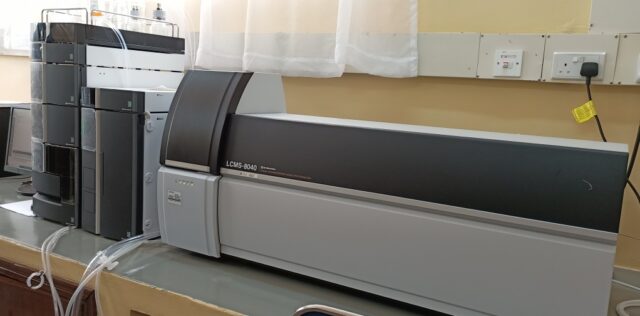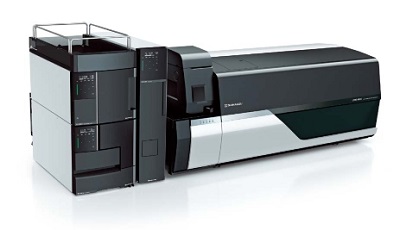Shimadzu Scientific Instruments introduced the LCMS-9050, a quadrupole Time-of-Flight (Q-TOF) mass spectrometer system designed with technologies developed for Shimadzu LCMS series models.

The LCMS 9050 provides the highest mass accuracy levels available and fast polarity switching. Shimadzu’s proprietary high precision temperature control system inhibits even tiny mass variations caused by external factors, so that the system can be used to measure accurate mass values without worrying about mass calibration.
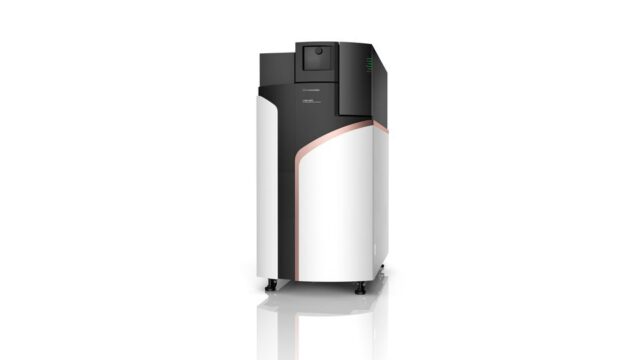
The stable positive/negative high-speed polarity switching technology enables the simultaneous analysis of positive ions/negative ions, contributing to new applications development and heightened analysis efficiency. To ensure that all users can perform analysis easily and efficiently, Shimadzu has aimed to simplify mass calibration, maintenance, and other non-analysis procedures. Further, combining this system with Shimadzu’s renowned lineup of varied optional equipment enables greater utilization of the characteristics of Q-TOF while greatly expanding the range of data obtainable.
FEATURES
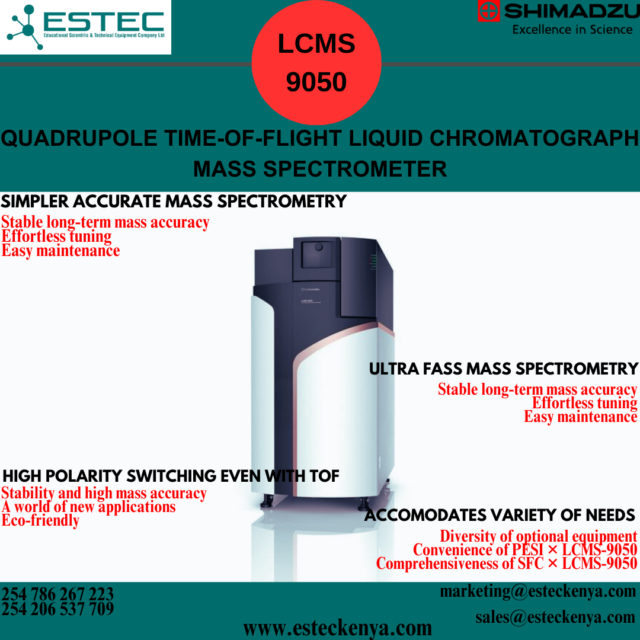
Simpler Accurate Mass Spectrometry
With technologies inherited from the Shimadzu LCMS series, the 9050 can maintain stable long-term mass accuracy. The system includes an auto-tuning function that uses a standard sample to automatically adjust mass accuracy, resolution, sensitivity, and other parameters.
Provides High-Speed Polarity Switching Even with TOF
The LCMS-9050 provides high-speed polarity switching by substantially shortening the time required for stabilization standby during polarity switching. With the LCMS-9050, stable mass accuracy is shown even during high-speed positive/negative polarity switching, enabling simultaneous positive ion/negative ion analysis.
Accommodates a Variety of Needs
The LCMS-9050 is designed so that a variety of optional devices can be connected. The ESI ionization unit included as standard can easily be replaced with a DPiMS™ probe electrospray ionization unit. In addition, the Q-TOF can be combined with the CLAM™ fully automatic LCMS pretreatment unit, the Nexera Mikros™ micro flowrate system, and the Nexera™ UC supercritical fluid extraction (SFE)/supercritical fluid chromatography (SFC) system.
Learn more about the LCMS 9050 Here
Written and Published by Mitchelle Gacheri

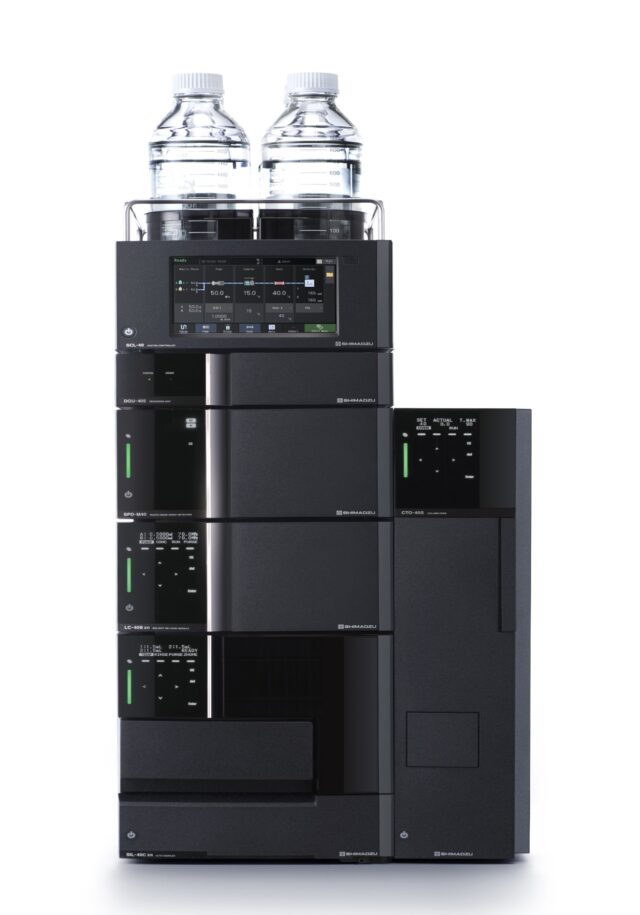 Liquid chromatography (LC) separates the components of a sample based on the differences in their affinity/retention strength during the stationary phase and mobile phase. Common LC techniques, namely reversed-phase, normal phase, and size exclusion chromatography. With technological advancements the LC has evolved to analyze smaller particle sizes and higher pressure that are more efficient, have higher speed, sensitivity, and resolution. This includes the high-performance liquid chromatography (HPLC) and the ultrahigh-performance liquid chromatography (UHPLC).
Liquid chromatography (LC) separates the components of a sample based on the differences in their affinity/retention strength during the stationary phase and mobile phase. Common LC techniques, namely reversed-phase, normal phase, and size exclusion chromatography. With technological advancements the LC has evolved to analyze smaller particle sizes and higher pressure that are more efficient, have higher speed, sensitivity, and resolution. This includes the high-performance liquid chromatography (HPLC) and the ultrahigh-performance liquid chromatography (UHPLC).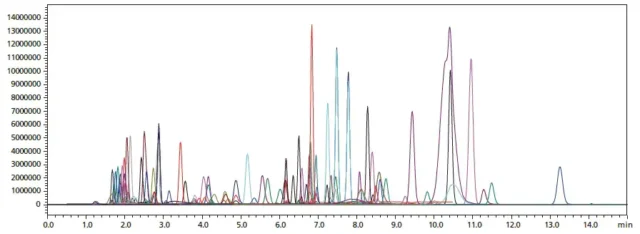 Source
Source